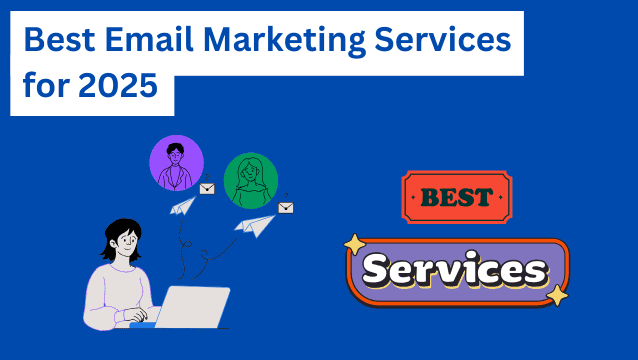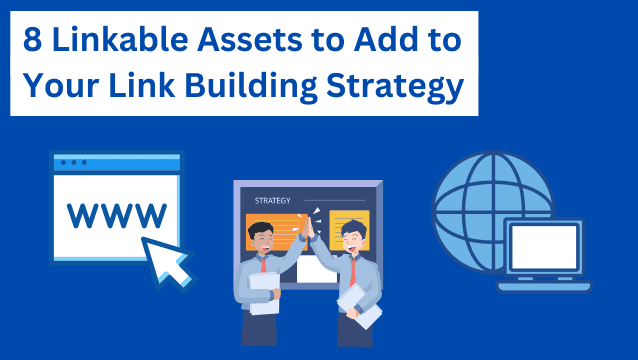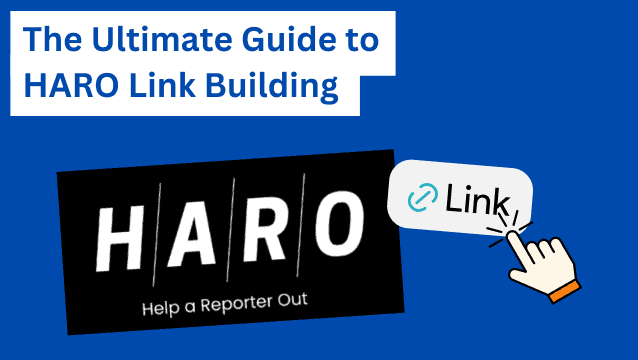Search engine optimization has never been an easy marketing strategy to perfect. In addition to the elusiveness of the answer to “what makes content rank,” search engines (a.k.a. Google) continue updating their algorithms to serve users better and prevent manipulation. Consequently, several SEO myths have grown into universally accepted truths.
However, the thing about effectively optimizing your site and content for better search rankings is that one size does not fit all. Adhering to “universal” truths, aligning your strategy with myths, and going with the flow could do more harm than good.
If you want to reach the top of SERPs (search engine results pages) and attract more high-quality organic traffic to your website, look out for these SEO myths that are killing your rankings. Read on to learn smarter strategies to use instead and how to separate fact from fiction with SEO advice.
SEO is all about keywords
One of the biggest and most prevalent SEO myths is that it’s all about keywords.
Admittedly, there is some truth to this belief. After all, more than 50% of shopping journeys begin with a search engine query in 2025.
Source: junglescout.com
That’s why you need to optimize your web pages and content to align with the search queries your audience is using to discover potential solutions to their pain points.
Nonetheless, overusing specific keywords most likely won’t help improve your reach. Instead, they might harm your rankings.
Avoid keyword stuffing
If you look at Google’s Spam Policies, you’ll find that this practice is one of the surefire ways to get your content deindexed.
Moreover, noticeable stuffing can also reduce the value of your content. Plus, it can negatively affect user trust and your ability to convert web visitors into customers.
Fortunately, the fix is relatively simple:
- Avoid excessively repeating the same search terms.
- Focus on producing natural content that contains keywords relevant to your audience.
- Use synonyms and long-tail keywords to ensure prospects can find your articles/pages.
- Use strategic placement to maximize the impact of the keywords already in your content (page title, URL, headers, intro, etc.)
- Don’t stick to the 2% keyword density rule at all costs. It’s a generalized suggestion for the number of keywords in your text, not a rule you must follow.
But how do you get your target audience to discover your brand, products, and content?
One of the best ways to avoid keyword stuffing while still ensuring impressive reach is to prioritize reader value and optimize for search intent.
When creating content for your site, understand that your primary goal needs to be helping your prospects remove their pain points.
Optimizing for search intent is a relatively easy way to accomplish this outcome. It focuses on giving readers precisely the type of info they need at the stage of the buyer’s journey they currently populate.
Source: moz.com
For example, you might be trying to reach awareness-stage consumers. In this case, your best bet for attracting their attention is through informational content. These types of resources help readers learn about a topic. More importantly, they set up web visitors for a successful shopping experience.
On the other hand, you might be targeting prospects researching their options before making a conversion decision. In this case, you’ll do better with commercial content similar to the Smash Ventures Top Search Fund Investors for SMBs resource. You’ll notice that this article gives readers a straightforward list of the best ways to resolve their pain points. Moreover, it contains handy links, evaluation-oriented advice, and tips for choosing effective solutions to their unique needs.
Source: smash.vc
Any backlinks will do
The second most common SEO myth that businesses (mistakenly) follow when trying to rank higher on Google is building as many backlinks as possible.
Just like with the previous tactic, the basis for this strategy isn’t inherently wrong. After all, backlinks are a ranking factor that can help you achieve higher SERP positions. They indicate that others have found value in your content. And they can be a solid source of high-quality traffic to your website.
Nevertheless, a backlink from a low domain authority referring page won’t do you any favors. Instead, it might just harm your website’s ability to rank, which is why these links are often called toxic.
How to build a healthy backlink profile
When aiming to improve your site’s search engine optimization, there are a few simple rules to building a healthy backlink profile.
- Don’t participate in link exchanges — especially not with sites that post low-quality content.
- Explore relevant and trustworthy directories in your niche and get listed in those.
- Employ competitor research to uncover broken links, then contact the publishers and offer your content as an alternative.
- Connect with industry experts, influencers, and journalists to maximize their chances of linking to your content.
Finally, don’t underestimate the importance of quality content in encouraging high-authority websites to link to your pages.
Producing resources that deliver genuine value to readers — like ReCostSeg’s Real Estate Depreciation Calculator — will undoubtedly generate more backlinks. Especially when compared to generic articles that repeat everything your prospects already know about your subject.
Source: recostseg.com
More content = better SEO results
Another common SEO myth businesses mistakenly follow is that more is always better. Again, the basis of this belief can be correct. However, quantity will never outperform quality — regardless of your marketing goals.
So, where does this myth come from?
Well, several organizations have proven that quantity can lead to improved organic search rankings.
In 2019, Backlinko published a study that analyzed 912 million blog posts. The findings were clear: articles with bigger word counts earned more backlinks and social shares.
Source: backlinko.com
Additionally, a higher posting frequency can also be effective at improving organic traffic.
For instance, in the 2024 update to its guide on blog posting frequency, Hubspot recommended brands publish 2-8 times per month, depending on blog maturity and available resources.
But is “more” genuinely better for SEO?
Both data sources make strong points for not being stingy with quantity. At least not when aiming to boost rankings. But the simple truth is that no universal rule can determine the right amount of content you need to achieve the SEO results you’re after.
So, stop trying to do as much as possible. Instead, shift your focus to doing things as well as you can.
Prioritize content quality over length. And come up with a posting schedule you can consistently stick to while maintaining a high level of value.
Ultimately, what helps resources rank isn’t their word count. It’s how they present web visitors with helpful, relevant information (and align with Google’s E-A-T guidelines).
So, don’t hesitate to prioritize user value. Instead of trying to hit a word count goal, produce resources that will benefit your audience the most.
Focus on creating in-depth educational resources. And enrich them with tons of fresh info. You’ll see that the outcome most often will be a long-form article. But its value won’t come from the word count. Instead, it will come from the breadth of relevant information it contains.
Furthermore, don’t be afraid to experiment with various content formats. Yes, SEO advice often zooms in on how to optimize blog posts or website copy. But there are more methods to present your ideal customers with value.
For instance, check out how Sewing Parts Online does it.
Source: sewingpartsonline.com
This brand knows how its audience consumes resources. That’s why it mainly focuses on publishing short instructional videos. You’ll see that several of its tutorials rank high on Google. Plus, the brand employs a versatile distribution strategy, making it much easier for the business to reach new prospects on a multitude of channels.
Web design and performance don’t impact rankings
Though it may not be a myth per se, thinking that website design and performance don’t impact SERP rankings is a common misconception.
But here’s the truth. An aesthetically pleasing site that offers a good UX will always outperform its competitors in terms of SEO.
Good web design achieves higher content engagement rates. It maximizes click-throughs to other web pages. Finally, it boosts consumers’ likelihood of returning to your website.
All of these actions are valuable signals. And Google will use them to determine the relevance of your content and how it should rank on SERPs.
So, how do you optimize design and performance to maximize your reach? Well, there are a few key aspects of web design and technical SEO to pay attention to.
Site speed
How fast a web page loads directly impacts user experience. And faster-loading sites tend to rank higher than their slow counterparts.
So, if you need an easy SEO strategy to improve rankings, explore ways to make your website faster. The PageSpeed Insights tool is a great place to start.
Source: pagespeed.web.dev
Mobile responsiveness
Google employs mobile-first indexing when crawling websites.
So, even though you don’t have to make your site mobile-friendly, doing so could be a great way to enhance SEO.
HTTPS security
Secure sites with SSL certificates rank better. So, do your best to provide visitors with a safe browsing and shopping experience.
Site structure
A well-organized site structure is a core constituent of a solid UX. It also helps bots crawl your site more effectively.
So, to rank higher, pay attention to your site’s hierarchy and ensure it makes sense.
Meta tags
Providing metadata to search engines is another excellent strategy for improving rankings. Additionally, structured data (or schema markup) can further help search engines understand the type of content you offer, making it more likely to appear on SERPs.
Visual structure and cues
Finally, although they may not be a technical SEO element, visual structure elements like headings can help search engines understand your content better.
For example, Google’s Position Zero tends to get the highest click-through rate. So, using headings makes for an excellent way to rank in the best spot on SERPs. For example, check out how Start in Wyoming did it with their post Can a Wyoming LLC Operate in Another State?
Source: google.com
Local SEO is just for brick-and-mortar stores
Helping consumers find your business is crucial for growth. Especially as the buyer’s journey almost always starts online — yes, even for offline purchases.
Yet, one of the most common SEO myths is that local SEO is just for brick-and-mortar stores trying to attract more walk-ins.
Admittedly, the biggest value of this strategy does come from directing your target audience to your brand’s physical locations. But that doesn’t mean you shouldn’t optimize content for location-related searches. In fact, you could gain a lot from implementing a few simple local SEO tactics, even if you’re a fully online business.
How to get the most out of local SEO
If you want your site to rank for location-specific searches, there are a few effective tactics you can use.
- Claim your Google Business Profile and optimize it with relevant information (like address and contact info).
- Create landing and content pages that target location-specific search terms.
- Don’t stuff your website with location-based keywords. Instead, use them naturally and in a way that provides value to potential customers.
- Highlight social proof, as the majority of people consider brand ratings before choosing a local business to buy from.
For an example of a brand that does all this, check out CodaPet. Its Pet Euthanasia in Arlington, VA page is built to attract local prospects. More importantly, it provides web visitors with location-specific information about the service. This automatically helps customers find vets in their area. It allows CodaPet to secure position #1 on Google. Plus, the insightful data makes the pre-purchase research that much more straightforward, which is particularly important in delicate situations such as end-of-life care and decision-making.
Source: codapet.com
You can DIY SEO without any previous experience
Finally, if you’re looking for tips on how to avoid bad search engine optimization tips that are killing your rankings, stop believing the claims that you can do it all yourself.
Yes, some of the basics of SEO are easy enough. Once you get the hang of them, you can take care of them yourself (if that makes sense for you — budget and time-wise).
However, optimizing for SERP rankings is a nuanced process. And playing it by ear (instead of following a well-thought-out strategy could do more harm than good.
Now, we can dig even deeper and talk about LLMO or AEO services, and how can they help. But first, find a reputable LLMO agency to help you get started. From there on out and with their help, you’ll easily optimize your content per new standards and trends.
Leave it to the professionals
The good news is that there are plenty of highly experienced SEO specialists you can hire to help your business stand out online.
In fact, you’ll see that most of the good ones don’t even sell a one-size-fits-all package. Instead, they focus their services on specific aspects of search engine optimization, like link building or unique industry niches like SaaS.
Source: userp.io
Yes, hiring them will cost more than trying to do things yourself. But at the end of the day, it will also ensure the results you’re after. Plus, once you’ve hit your initial goals, a solid foundation will make long-term strategic SEO much easier to implement than a DIY job ever could.
Final thoughts
Basing your SEO efforts on myths will definitely not get you the results you’re after. Instead, it might kill your rankings, harm your brand’s reputation, or cost you valuable business to your competitors.
However, there are effective and easy strategies you can use to rank on search engines. The ones outlined in this guide are a great start. But if you’re looking for outstanding results, the best thing you can do is let the professionals do the hard work. Then, all you have to do is maintain and update as needed and reap the rewards of their labor.


